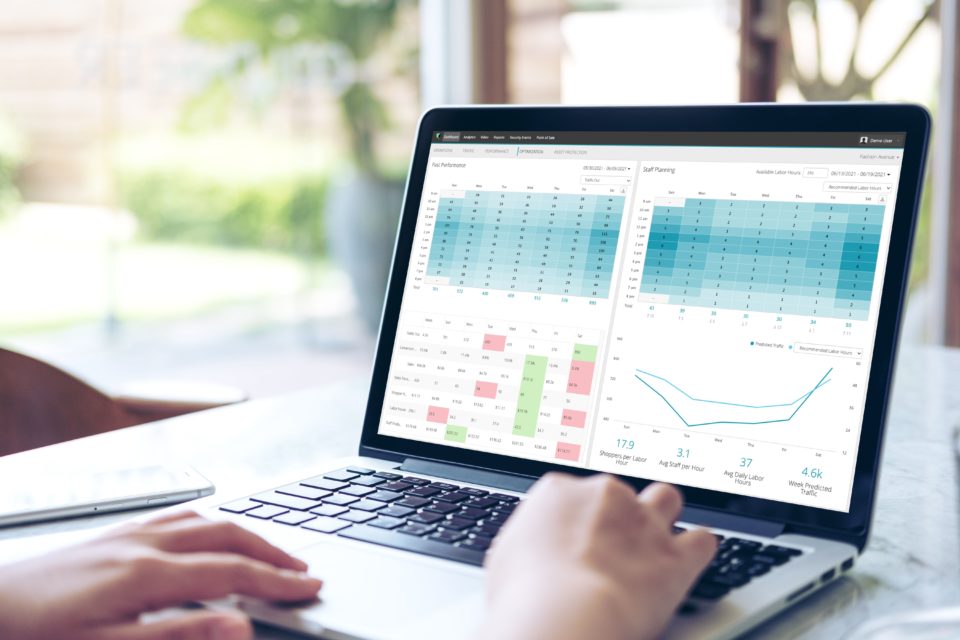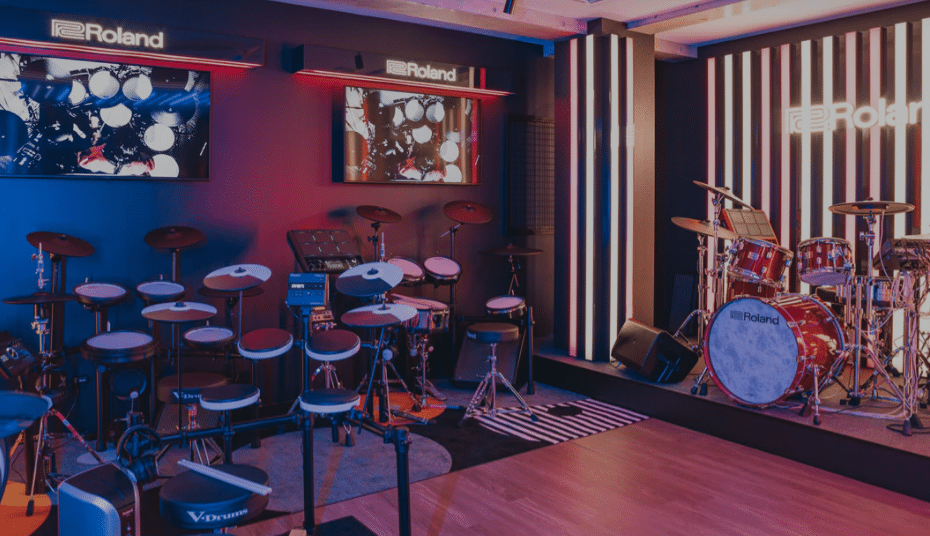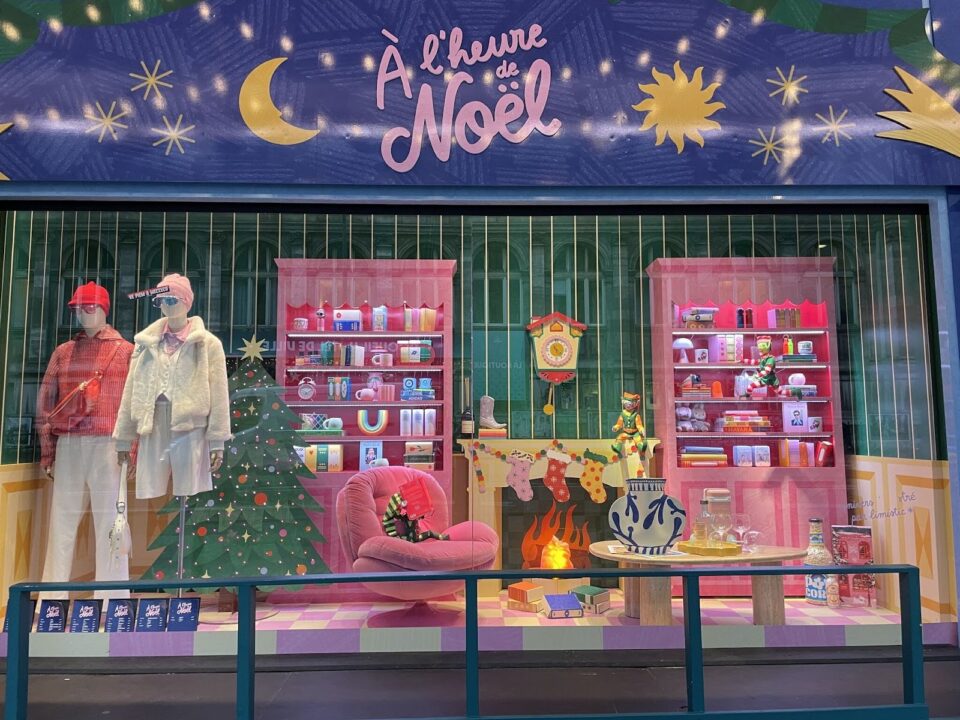How do you reimagine a brand like L’Occitane?

You can’t hear the name L’Occitane en Provence, or L’Occitane, without thinking of the south of France. That’s how closely this beauty brand’s heritage is tied to its identity. Many of the natural ingredients used in its products are still sourced from its Provence home.
With tradition such an important part of its brand story, it’s easy to imagine the brand being left behind in today’s fast-moving retail world. But as Paul Blackburn, Vice President, Retail Development, Design & Merchandising, North America, explains, L’Occitane is reimagining its stores in a very modern, very on-brand way.
Could you tell us about L’Occitane’s new strategy and how it evolved?
When I joined L’Occitane in 2012 we were still very much growing the business in North America. It was a much more traditional way of thinking though where the stores were all around the same sort of size and they all looked sort of the same. At that point we started looking at how we could move the needle.
There’s a bit of a perception that we’re an old-fashioned brand, which we’d always reinforced somewhat with concepts that were quite traditional. We realised that we’re an established brand with a long history and a lot of true stories connected to that which are really important to us, but the technology behind our formulas and some of our products is really quite modern and forward-thinking and we need to tell that version of our story a little bit better.

Flatiron
Our Provence Home Concept in 2014 was really the first time that we tried to do something that was less attached to the old-fashioned style of L’Occitane. Our Asian business led the way because at that time a lot of crazy growth started coming out of the Asian markets and they were pushing the envelope.
That opened up opportunities for us where instead of taking the same concepts and just repeating them everywhere, that each local market started to interpret them just a little bit differently to make them a little bit more relevant. We were no longer bound by this idea that every store no matter where you are in world needs to look the same. It was the first step along the way to this ‘glocalisation’ for a global brand and local communities.

Disney Springs
Alongside that we were doing some special projects such as the new Disney Springs space in early 2016 where we had a big brand statement homage to the L’Occitane factory. Later that year we remodeled our Flatiron store in a technology driven way with interactive terminals that the press coined as ‘the smart beauty fitting room’. That moved the needle again. We then launched very experiential stores with Yorkdale in Canada, the Champs-Élysées concept store over in Paris and the Regent Street concept store in London.
By taking the best of these projects, last year we launched a new concept in our core stores called Sunshine. It was much more modern and open, and we wanted to invite the community in by really embracing the experiential nature of the stores. What’s interesting there is that historically whenever we’ve done anything new it was always started at a central level, in either Paris or Geneva, and then rolled out into other markets.
This time we wanted to move quickly so rather than the typical creative prototype test, learn and 18 months later you might be in a position to rollout, we were given direction to launch this new concept simultaneously all around the world in some of our highest volume stores to have the biggest possible impact immediately.

Disney Springs
We opened six of these stores across October, November and December 2017 and had some phenomenal results last holiday. We’ve continued to open a few more this year and in fact we’re already tweaking that to develop it and do something different for the next rollout.
We’ve gone from a very traditional model of develop a concept, roll it out for five years then come up with a new one and roll it out for another five years. This new concept has moved the needle for us in terms of experience and brand awareness, but we’re not resting on our laurels.
Our new 555 concept store on Fifth Avenue in New York has taken this to the extreme. There are lots of experiential elements in there, but the entire store will evolve much more frequently. To continuously reinvent ourselves is challenging, but we recognise that the world of retail is changing incredibly quickly and we’re doing everything we can to make sure we’re at the front end of it.

555
Have you planned out the 555 store evolutions in advance or is it very much about responding to what’s happening?
We had a six-month look ahead at launch. We knew it was opening in summer and what we were opening with. We knew what we were changing it to in the fall and we knew what we were changing into for the holidays. Those three ideas were very much in mind because they were all quite different stories and we knew that they would be complementary and resonate well with the public.
We are now in the process of working on a tentative visualisation calendar for 2019. We have a pretty strong idea of what it’s going to evolve into in January right after our holiday installation and some pretty firm ideas for the remainder of the year. But nothing is set in stone.
For example, we had this kind of Instagram moment at the front of the store when it opened called Pedal through Provence. We had these three yellow bikes, a beautiful Provencal village backdrop with live flowers hanging from the ceiling to make it a three dimensional visual. Customers get on the bike and pedal and take selfies.

555
The plan was just for those to be there for the summer and then we were going to transform it into another experience. But the customer responded so well to it that we elected to leave that in for fall. We have a strong foundation of stories that we want to tell based on our retail calendar but it’s in no way married to our retail calendar, which gives us a lot more freedom to play.
The beauty of the space is that it does allow us to respond much much faster. It’s very much a partnership with our international team, but it’s really a local initiative so we’re able to be a little bit more agile and move faster than sometimes you are at a global level. The whole thing is really run by the team here in the New York office and we’re literally 10 minutes from the store so we’re able to respond very quickly to how the store performs and evolves.
I’ve described it when asked as a playground because it really is an opportunity to test new things in a way that we’ve never really been able to do before. With Flatiron and Disney Springs and the Yorkdale store, these were massive investments with beautiful architecture. Every detail was painstakingly thought out.
But beyond genuine merchandising it’s difficult for those stores to truly evolve without some serious heavy lifting. We went to the opposite of that at 555 where we kept the architecture very minimal so that the merchandising really could take over and could completely transform the store.
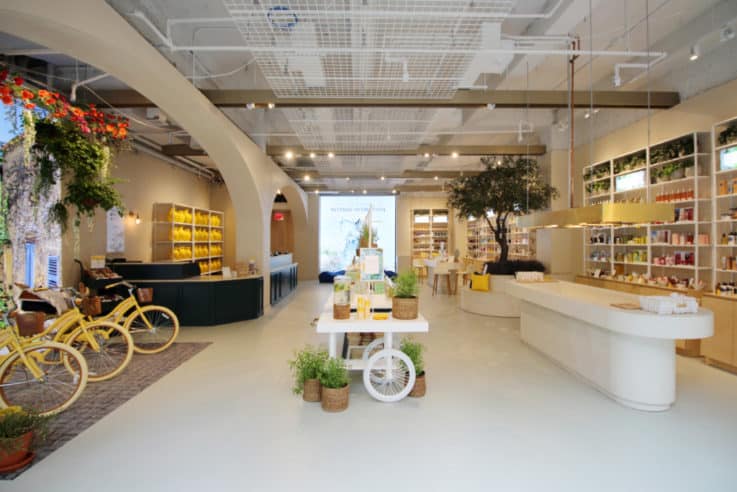
555
At what level are changes made to the store throughout the year?
The store doesn’t have a typical window display in that there’s no product on display in the window. We brand it with messaging and graphics, which change completely every time that the campaign changes. Inside the store, everything in the main central space has the potential to change from furniture to the product assortment to the ceiling treatment to the visuals to the floor.
We have a trellis down the middle of the store that allows us to add and take things away as we wish. We put in digital projectors so that we can quite quickly transform the environment with light and animation as well. On the left side is our primary user generated content moment like the Pedal through Provence experience.
It’s a little bit of fun and letting people know that we don’t always take ourselves seriously. That entire space has the potential to change completely depending on what the story we want to tell is. It might change on the same calendar as the central space. It might change on a separate calendar.

555
One of the products we have for the holidays is this really beautifully designed luxury 3D advent calendar. The whole thing spins and as it spins more doors open, but they’re kind of hidden and you have to find them. It’s just a really clever product and we’ve created a giant one of those that customers can play with. A certain number of customers that come in and play with it and find the appropriate door during the month of December receive a free gift so it’s a great way for us to animate and drive traffic to the stores.
We have all sorts of ideas though. That part of the store also has the potential to be quite interesting with regards to partnerships and maybe bringing in a complementary brand or an affiliate to come in and take over that whole space. It’s quite exciting to brainstorm these ideas as nothing is too crazy.
Also, in the store we have the concierge where we do customised engraving, a click-and-collect service and same day messenger service. We hope that we can add more services as the store evolves as well. Then in the right of the store we have our core product which is ultimately what the customer knows and loves about us. It’s making sure that we’re creating novelty, driving brand awareness and doing lots of fun things, but also that the customer that loves us can still come and get what they want.

555
What is the relationship between the 555 store and the others in North America? How are you changing the other stores as a result?
It’s important to note that 555 is physically very different from our core stores and logistically that constant evolution is very time-consuming. The store is also is three to four times bigger than our typical store, both here in the US and all over the world. We can never roll that out as a concept, but I think you’ll see some stores of a similar nature from us in opportunities where we want to create a point of difference in the market.
For example, our Los Angeles business is similar to our New York business in that we have more than 10 stores in that market and at the moment they’re all kind of the same. If we want to create a point of difference then maybe one of those stores needs to be a little bit special. I truly believe that the concept of being able to build a store and largely leave it alone for five years is not going to be enough to satisfy the consumer. If you’re simply selling the same product in the same way you’re going to struggle.

What’s was really exciting for me is that I can say hand-on-heart that at this point last year we had no idea that we were going to do 555. We knew we wanted to have a bigger presence in midtown New York, but we hadn’t even seen the space. We didn’t know what the store approach would be. Twelve months ago, that project was not really conceived and start-to-finish we opened it in seven months. That gives you an idea of how quickly and aggressively we go at something when a really exciting opportunity presents itself.
It takes a great effort from a massive number of stakeholders all over the world and we’re very fortunate that we’ve got that support. It’s challenged us to think in a different way. We built 555 for a little bit more than a third of the cost that we spent on the other recent flagship stores. We really challenged ourselves to think differently about how we could invest less in that initial build out to allow us to invest more in the constant upgrading of the store.
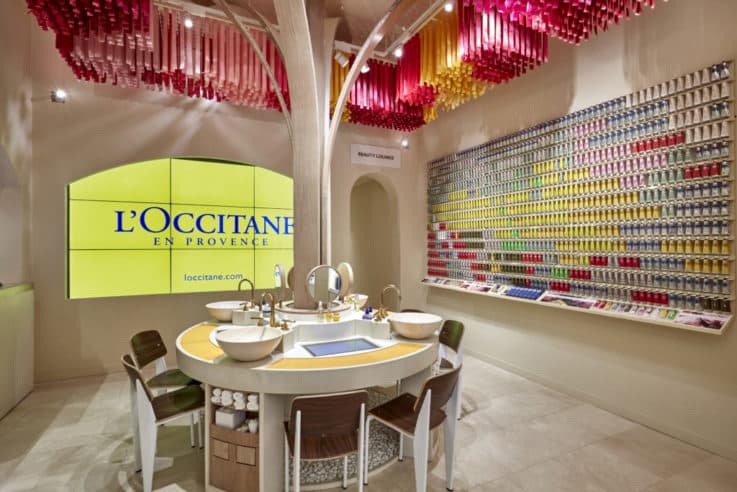
Flatiron
How does ecommerce impact on the stores?
There are no retailers out there who want to be successful that don’t strive for a viable omnichannel business. Whether you’re a traditional brick and mortar retailer like us who then went online, or a pure play retailer like Amazon who is now going physical, everybody is striving in their own way to be omnichannel and you just have to figure out how to do it.
For us we want the two experiences to be complementary. We want our customers to have a great customer experience with us whether the touchpoint is online, in-store, through wholesale channels, through our B2B business.
For example, in the new concept revolution for our core stores we’ve added QR codes to every product in the store. No matter where the customer is in the store, they can scan the QR code on their own device and it will link immediately to the product page on our website. It means they can access customer reviews and more product information. It’s a great way for the two sides to complement each other and each serve a very different purpose.
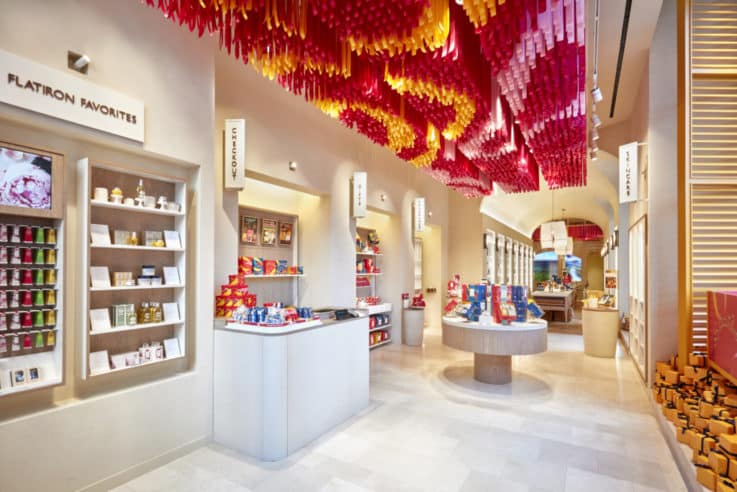
Flatiron
A lot of our stores are pretty small and despite the retail environment rent continues to get more and more expensive so the stores I believe will continue to get smaller and smaller. If that is the case, then we’re not going to be able to hold all the product in the store so it’s imperative that we’re still able to give that product to the customer and fulfill them immediately via our web business.
I think if a customer comes into a store then typically they want to walk out with a product. but if we can tell them that we can get their products that afternoon or certainly via overnight delivery that will keep the majority happy.
We’re working on some exciting back-office projects at the moment where ship-from-store is going to allow us to deliver a lot faster which will allow us to not necessarily carry the full assortment of products in the store which will allow us to enhance the experiential moments in the store.

Yorkdale
What is the mix between product and experience in your typical stores?
With the Sunshine concept, we talk a lot more about gifting as experiential moments because that’s what we’re known for. In certain locations, customers can even wrap gifts themselves with custom stamping and choices of ribbons and papers.
The sink is also a hugely experiential part of our store. Now it just seems like a no brainer, but historically that sink couldn’t have been where it is at the front and centre of the store because that’s where a table needed to go to push our novelty products. That commerciality of the business of product, product, product has been replaced in some part.
The first thing we want to do is get the customer to come in and get their hands on some of our best products at the sink and start their sensorial discovery journey with us by playing with them. If we do that it’s probably going to be more compelling than a beautiful display and some signage telling them what the latest, greatest thing is. In many other stores we’ve added lounge areas, so customers can sit down and relax and hang out and use the store as a community hub.
Adding all those elements into the stores, I believe is hugely important. Of course, the only way we can do that is by removing units that typically sell products. I believe that ultimately, whether it’s today or tomorrow, customers will eventually just be shopping online, so I think it’s essential that we provide experiences and less essential that we provide every single product.

Disney Springs
As the retail world changes, is L’Occitane making changes to its internal structure business or how people within the business make decisions and interact with each other?
We had a new global managing director join us this year and he has looked at the entire business with a fresh set of eyes and is challenging us to look at how we do things. I think the structure and how that looks will continue to evolve. We grew very quickly over the last 20 years; we’re a billion-euro business now. Within that growth though, we’ve got a little bit siloed in some sectors, so I think there’s always opportunities.
Historically everything came out of and was controlled at a central level and the affiliates around the world implemented what we were being told to do by the central team. Obviously, that still needs to happen to a degree as there needs to be a very consistent brand story, but we are being given more leeway to push the boundaries and test things in our markets. The great thing about us as a business is that just like the stores and just like the concepts there’s an openness to doing things in a different way.
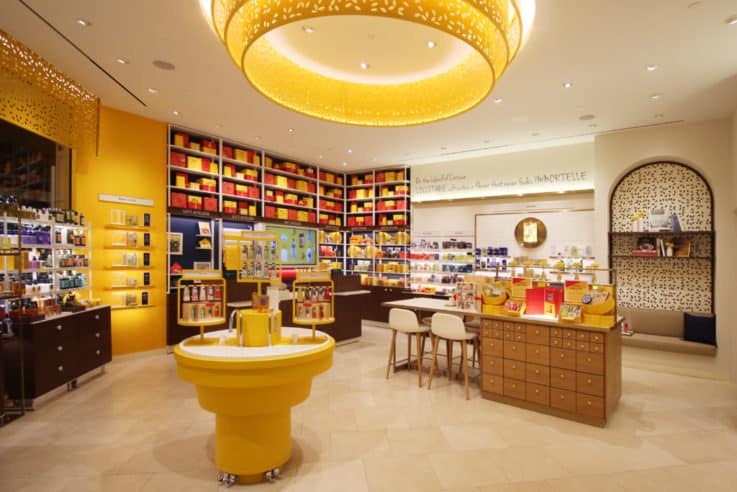
Somerset Collection, Troy
What challenges and opportunities do you see ahead in the next five to seven years?
I believe that it’s impossible to predict what retail is going to look like in five to seven years’ time. Therefore, our biggest challenge is building a store network that is agile enough to evolve quickly to adapt to whatever those changes are going to be. If we can learn anything from the last five years is that five years ago there’s no way we could have predicted retail today. Each year things evolve and move faster and faster and faster.
I’m sure expectations of service and quality from the consumer will continue to rise. I think their tolerance for anything less than a perfect seamless experience will continue to decrease as well. Our biggest challenge is positioning ourselves such that we’re satisfying their needs now, whilst building in enough agility and flexibility to be able to change and pivot quickly to meet their needs in the future.
I recently saw this put in another way that rather than trying to imagine what will be different in five or 10 years’ time, think about what won’t be and invest in the things that won’t be. I still think that customers will want to go shopping and have a wonderful experience because I think fundamentally people like shopping and retail therapy is a thing that exists. I truly believe that there is a place for retail and it will continue to be a really really important place, we just have to enhance the customer experience.
Images courtesy of L’Occitane
Explore world-leading retail experiences like this on a Paris retail safari. Get in touch to find out more.

